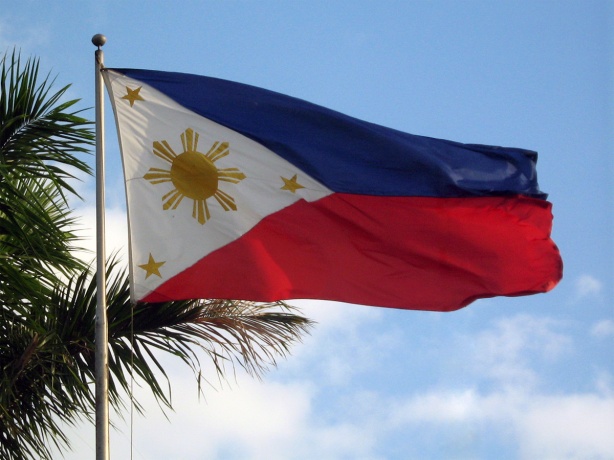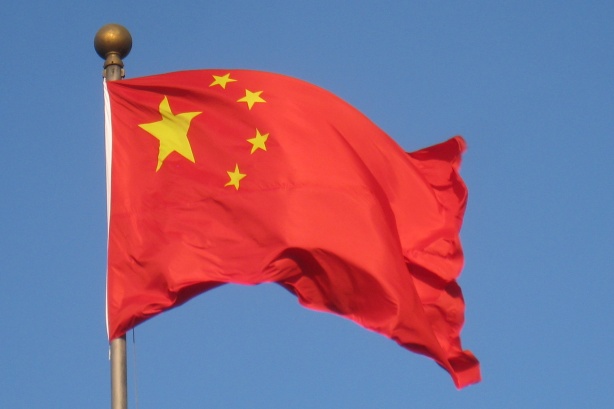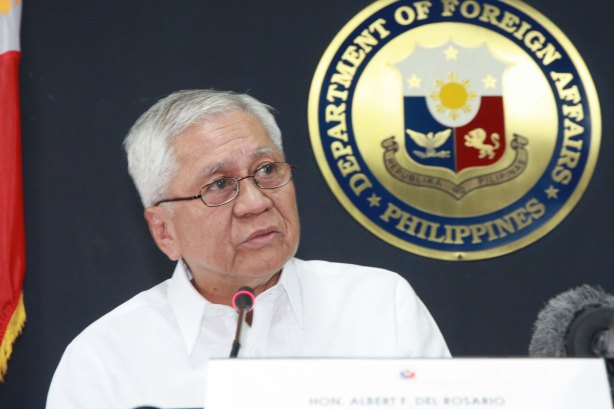“The changing triangular relations between the Philippines, the United States and the People’s Republic China: From Obama, Aquino, and Xi and beyond”
Amado M. Mendoza, Jr. and Richard Javad Heydarian
Part IV


The dragon and the carabao
Philippine-China bilateral ties have been far from monolithic, perhaps representing one of the most volatile inter-state relationships in recent memory. Today, the Philippines is seen as one of the most vociferous and outspoken critics of China’s maritime assertiveness in East Asia. And it has, much to the chagrin of its giant neighbor, taken the unprecedented decision to use third-party arbitration, under the aegis of the United Nations Convention on the Law of the Sea (UNCLOS), to push back against China’s sweeping claims and ever-expanding para-military patrols across the South China Sea.
Less than a decade earlier, however, the two countries enjoyed a highly cordial relationship, anchored by institutionalized security dialogue, large-scale trade and investments deal, and various confidence building measures (CBMs) aimed at managing their territorial disputes. A mono-causal explanation of the evolution of Philippine-China ties obfuscates the complex interplay of multiple factors in shaping their bilateral relationship. The Philippines’ relations with China have been influenced by not only major developments in the South China Sea — namely, China’s coercive assertion of its claims at the expense of the Philippines — but also the strategic predisposition of each Philippine administration as well as the broader dynamics of U.S.-China relations.
A rollercoaster relationship
As America’s oldest ally, the Philippines stood with its former colonial master throughout much of the early-Cold War period, serving as a key logistical hub during the Korean War (1950-53) as well as the Vietnam War (1955-75). The Philippines proved itself as a crucial partner in containing the spread of Communism in the Asia-Pacific theater, hosting America’s largest overseas bases in Clark and Subic, which served as the bedrock of Washington’s forward deployment presence in the region (Anderson 1999; Bello 2006; 2010).

Manila’s strategic proximity — if not subservience — to Washington, however, did not prevent it from reaching out to Beijing. In the 1970s, the Ferdinand Marcos administration (1965-1986) pursued a rapprochement with Chairman Mao. The Filipino strongman recognized the importance of maintaining stable relations with a powerful neighbor, which could hurt the Philippines both from without and within. On one hand, the Philippines was embroiled in a domestic counter-insurgency campaign against an increasingly powerful indigenous Communist movement. Externally, the Marcos administration was cognizant of China’s growing ambitions in the South China Sea, as Beijing sought to eliminate South Vietnam’s presence in the Paracel chain of islands, culminating in skirmishes in 1974, and push further into the Spratly chain of islands. The Philippines was intent on making sure its presence in the Thitu Island, where it established an airstrip and advanced facilities, was not threatened by China, although robust American military presence in the Philippines served as a key deterrence.. Overall, Manila sought a modus vivendi with its Communist neighbor. Crucially, the normalization of Philippine-China ties took place within the context of a brewing détente between Beijing and Washington, as China’s paramount leader reciprocated the Nixon administration’s charm offensive. Mao and Nixon laid down the foundations of a de facto US-China alliance against the Soviet Union, which ramped up its security ties with (a newly unified) Vietnam. Both Manila and Beijing were concerned with prospects of greater Vietnamese territorial assertiveness — with Soviet assistance and against the backdrop of America’s humiliating setback in South Vietnam — in the region.

The rise of pragmatist leader, Deng Xiaoping, coincided with (i) the normalization of China’s ties with (American-aligned) Southeast Asian neighbors and (ii) a determined pushback against Hanoi’s ambitions in Indo-China, particularly in Cambodia, and in the South China Sea, particularly in the Spratly chain of islands where Vietnam enjoyed the most expansive presence, controlling some twenty one (21) features. The Moscow-Hanoi axis represented a common enemy to Beijing, Manila, and Washington, who were increasingly bound together by a cynical “the enemy of my enemy is my friend” strategic mindset. Philippine-China bilateral relations also benefited from the growing sophistication of Beijing’s diplomacy. Deng Xiaoping embarked on a charm-offensive across Southeast Asia shortly after assuming power, and chose to nix long financial-logistical support to Communist insurgencies across the region; meanwhile, his protégé Jiang Zemin (1992-2002) oversaw the transformation of the Chinese diplomatic corps into a modern, articulate, and competent force, which facilitated a careful cultivation of bilateral ties with neighboring countries such as the Philippines (Graver 1992; Kurlantzick 2007; Kissinger 2011; Shirk 2007).
The end of Cold War, however, presented new challenges to Philippine-China relations. The withdrawal of American bases from the Philippines in 1992, after a wave of nationalist outcry against foreign military presence in the country, created a huge power vacuum in the region. It didn’t take long before China stepped in, coercively occupying (1994) the Mischief Reef, a feature claimed (and intermittently occupied) by the Philippines in the Spratly chain of island. By 1995, the two countries confronted a diplomatic crisis, with the Ramos administration (1992-1998) considering various measures to restrain China’s territorial opportunism and wrest back the Mischief Reef. Aside from augmenting the capabilities of the Armed Forces of the Philippines (AFP), under the AFP Modernization Act of 1996, the Ramos administration assiduously mobilized a regional diplomatic offensive against China, which culminated in the 2002 Declaration on the Conduct of Parties in the South China Sea (DOC). Forged under the aegis of the Association of Southeast Asian Nations (ASEAN), the DOC provided a foundational document for a long-term management of the South China Sea disputes, discouraging claimant states from engaging in provocative, unilateral and coercive measures in the area, among other things. Crucially, it provided a basis for the negotiation of a more legally-binding Code of Conduct (COC) in the long-run. The Philippines decision to welcome back American troops, under the Visiting Forces Agreement (VFA), was by no means sufficient to fully deter Chinese adventurism. The VFA neither provided for the establishment of permanent, large-scale American bases in the Philippines — a non-starter on constitutional grounds — nor did it translate into unequivocal American support for the Philippines amid the Southeast Asian country’s territorial disputes with China. The Ramos administration had to place at least some of its strategic eggs in the diplomatic basket. There was no military solution to the Chinese threat.
With the entry of China into the World Trade Organization (WTO), and the emergence of the Communist power into a regional economic pivot, neighboring countries further shifted their attention to trade and investment-related issues. Now, China was primarily seen as an indispensable economic partner for many East Asian countries. And the Philippines came to saw China as a vital trading partner, too. Meanwhile, the Bush administration’s (2000-2008) pugnacious and unilateralist foreign policy began to alienate many countries in the region. Soon, many countries began to see China as a peaceful, cooperative rising power standing in stark contrast to the unilateral assertiveness of the U.S. By 2004, the Arroyo administration (2001-2010) decided to withdraw its troops from the “Coalition of the Willing” contingent in Iraq, a move that incensed Washington but bought the unpopular Filipino president desperately needed political capital at home. The move came on the heels of growing popular demand for saving a Filipino hostage (Angelo De La Cruz) held by al-Qaeda-affiliated groups in Iraq, which demanded the withdrawal of Philippine military presence in the Middle Eastern country in exchange for the hostage’s life. To pre-empt any potential reprisal from Washington, which dangled the option of reducing military and financial assistance to its Southeast Asian ally, the Arroyo administration astutely employed the ‘China card’, embarking on a high-profile state visit to Beijing, which culminated in a series of trade, security, and investment agreements. What followed was arguably the “golden age” of Philippine-China relations, as the Arroyo administration inked major Chinese investments in the country, particularly in the infrastructure sector, and explored CBMs such as the 2005 Joint Maritime Seismic Undertaking (JMSU) to manage disputes and explore joint development schemes in the South China Sea (Morada 2006; Mendoza and Heydarian 2012).

Astonishingly, even the U.S. was seemingly impressed by China’s efforts to develop cordial ties with the Philippines. For instance, in a cable entitled “More on Hu Jintao’s Visit to the Philippines”, the American Embassy in Manila was largely sanguine with Chinese president’s 2005 visit to Manila by stating: “President Hu’s charm offensive in Manila does not appear significantly different from that in other ASEAN capitals. Better and broader bilateral ties advance regional interests, as other ASEAN members have also discovered”.[1] In another cable, entitled “Joint Seismic Survey in South China Sea makes progress”, Washington also welcomed the JMSU agreement: “The joint seismic survey offers a good model for potential subsequent cooperation on exploration and exploitation, and fits neatly with Philippine goals of increased interaction between ASEAN and China and the promotion of confidence building measures. The true test of the cooperative spirit, however, will come when the parties may contemplate Extraction.”[2] Astonishingly, the U.S. was cautiously optimistic with respect to growing Philippine-China relations.
Bilateral ties, however, began to sour towards the twilight years of the Arroyo administration, as the Philippine Supreme Court declared the JMSU unconstitutional and a series of corruption scandals rocked Philippine-China joint ventures, particularly the NBN-ZTE project. The election of a new Filipino leader paved the way for a qualitative shift in bilateral relations. Presenting his agenda as a moral crusade against corruption (and his successor), Benigno Aquino III was bound to be more circumspect vis-à-vis large-scale Chinese investments in the country. The 2008-09 Global Financial Crisis also took a toll on bilateral trade, which reached as high as $30 billion in 2007 but significantly shrank (and shifted in China’s favor) in succeeding years (Mendoza & Heydarian 2012). Bilateral ties were further embittered by growing Chinese assertiveness in the South China Sea, particularly in 2010 and 2011. The Philippines had to suspend its oil exploration activities in the Reed Bank due to Chinese harassments. No wonder then, the Philippines began to openly embrace the Obama administration’s Pivot to Asia (P2A) policy, with a primary focus on augmenting America military footprint in the region. Philippine Foreign Secretary Alberto del Rosario (a former ambassador to Washington) stood as among the most enthusiastic supporters of P2A in Asia, pushing for an upgraded Philippine-U.S. security alliance (against China).

Nonetheless, there were several attempts by the Aquino administration to prevent a breakdown in bilateral relations, particularly his highly-controversial refusal to attend the Nobel Peace Prize ceremony in 2010 for Chinese dissident Liu Xiaobo as well as his high-profile visit to Beijing in 2011. But the Scarborough Shoal crisis in mid-2012 — pitting a Filipino frigate against an armada of Chinese coast guard vessels, and subsequently unleashing Chinese economic sanctions against the Philippines — led to an effective breakdown in bilateral relations. Attempts at backdoor channel diplomacy heavily backfired, leading to acrimonious blame games between Filipino officials and legislators, China refusing to disengage from the contested feature and proceeding with cordoning of the whole area. The Philippines’ decision to initiate compulsory arbitration against China in early-2013 heavily undermined prospects for better bilateral relations under the Xi Jinping administration (2012-2022), which has shown even greater determination to consolidate Chinese claims in the South China Sea. The Aquino administration’s often incendiary rhetoric against China and its decision to welcome greater American rotational military presence in the Philippines, under the Enhanced Defense Cooperation Agreement (EDCA), also discouraged Chinese leaders, from President Xi to Premiere Li Keqiang and Foreign Minister Wang Yi, from holding even a single high-level dialogue with their Filipino counterparts.
With Filipino officials accusing China of acting like a “bully” and Beijing returning the favor by accusing the Philippines of acting like a “troublemaker”, bilateral relations entered their darkest period in recent memory. As far as the South China Sea disputes are concerned, China holds the upper hand. It is highly unlikely that there will be any significant respite in the ongoing bilateral diplomatic deadlock until a new Filipino leadership, with a more pragmatic streak and subtle diplomatic language, takes over in 2016.
________________________________
Notes:
[1] Cable retrieved from the Wikileaks site, see https://wikileaks.org/cable/2005/05/05MANILA2174.html#
[2] Cable retrieved from the Wikileaks site, see http://www.wikileaks.org/plusd/cables/06MANILA4848_a.html















